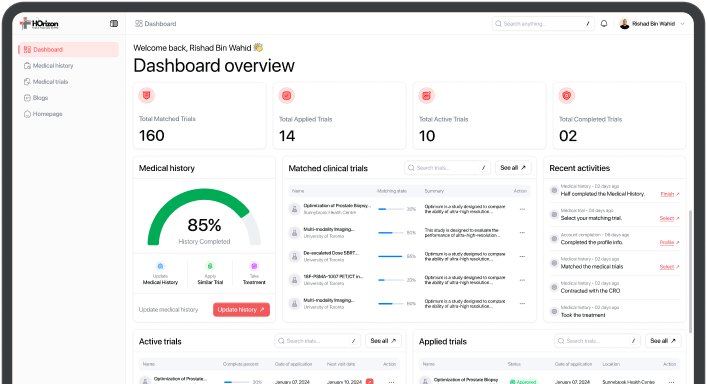Using Rectal Hydrogel Spacer for Salvage SABR in Prostate Cancer (FIRST STAR)
Contact information
Amandeep Taggar, MD
Sunnybrook Odette Cancer Centre
Toronto, Ontario, Canada, M4N 3M5
Basic information
N/A
N/A Age
10 Enrollment
Trial Details
Brief Summary
There are several single institutional series that have reported their experience with salvage radiotherapy options that include EBRT, LDR and HDR brachytherapy. Gastrointestinal (GI) toxicity with salvage radiotherapy range between14-58%, respectively for patients undergoing re-irradiation. There is a concern for an increased risk of fistula development in these patients who receive second course of radiation. Hypofractionation using SABR has been utilized in the re-irradiation setting for prostate cancer with good tumor control and toxicity outcomes. In order to decrease the rectal toxicity, dose to the rectum should be kept as low as possible. Several techniques can be used to achieve this: tighter dosimetric dose painting, better patient or organ immobilization or use of a biodegradable gel. The Investigators ropose a phase I study to assess placement of a hydrogel spacer between the prostate and rectum, in an effort to decrease toxicity and improve patient's bowel quality of life.
Official Title
Feasibility of Integrating Rectal Hydrogel Spacer for Salvage Treatment Using Stereotactic Ablative Body Radiotherapy for Locally Recurrent Prostate Cancer
Selection Criteria
Eligibility Inclusion Criteria
-
- Histologically and radiologically confirmed locally recurrent prostate adenocarcinoma
- Willing to give informed consent to participate in this clinical trial
- Able and willing to complete EPIC and EQ-5D questionnaires
Eligibility Exclusion Criteria
-
- Contraindication to prostate MRI
- Anticoagulation medication (if unsafe to discontinue)
- Diagnosis of bleeding diathesis
- Poor baseline urinary function defined as International Prostate Symptom Score (IPSS) >20
- Evidence of castrate resistance (defined as PSA > 3 ng/ml while testosterone is < 0.7nmol/l). Patients could have been on combined androgen blockade but are excluded if this was started due to PSA progression.
- Definitive extrapelvic nodal or distant metastatic disease on staging investigations.
- Prior ultra-hypofractionated radiotherapy ( SBRT of 5Gy/fraction or higher)
